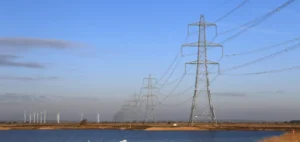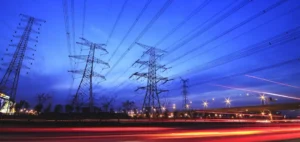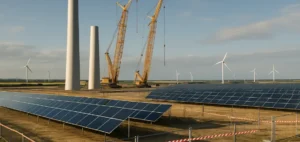On August 16, 2022, the US federal government passed its Inflation Reduction Act (IRA), the American Inflation Reduction Act: a flagship policy with enormous potential to reshape the sector. One of the largest public energy investment proposals in the U.S., designed to provide structured incentives and a stable environment after three decades characterized by short-term clean energy policies.
Outlook for the American Inflation Reduction Act over the coming decades
Following its introduction, we expect it to usher in an era of prosperity for renewable energy manufacturers in the United States. There’s no doubt that this unprecedented policy offers a breath of fresh air to an ailing sector, with potential investment of up to $1.2 trillion in the US and Canada over the next decade, rising to $3.2 trillion by 2050. One year after the IRA’s adoption, a webinar was held to assess the policy’s impact on the US energy market, reflect on potential obstacles to its advancement, and analyze what it all means for the energy transition.
A common misconception about the IRA is that it’s a ten-year law – that the technology-neutral renewable tax credits the legislation provides extend for the next ten years only.
However, tax credits will be available for much longer; perhaps even for the next 30 to 40 years. Although the IRA states that central tax credits will be available until 2032 – which is why it’s generally considered a ten-year law – there’s another aspect to consider: these tax credits will apply until the U.S. electricity sector reaches 25% of 2022 CO2 emissions. And that’s the decisive factor. According to our baseline scenario, the United States will not reach the 25% emissions threshold until the late 2040s.
Costs and opportunities: Deciphering the subsidies offered by the American Inflation Reduction Act
Instead of being a ten-year law, it’s much more likely that the tax credits offered will be available for decades, creating huge investment opportunities for renewable technologies such as solar, wind and storage. The traditional tax equity market in the United States is generally around $15-20 billion a year. But with the IRA, the tax equity offer could reach up to $100 billion in any given year by the end of the 2040s.
The total cumulative cost of subsidies offered under the IRA could reach between $2.7 trillion and $2.8 trillion. This represents an order of magnitude higher than what the public currently understands as the cost of legislation. This level of demand cannot be met by the market as it is currently structured. Two things will have to happen: firstly, the portability market will have to develop significantly. Recently published regulations have kick-started the market, although it’s still in its infancy. And secondly, new players will have to enter the fray, beyond the large companies that traditionally operate in the renewable energies sector.
Interconnection costs, transmission and storage development will be the key drivers of how quickly the energy transition materializes, and what can ultimately be achieved thanks to the foundations laid by the Inflation Reduction Act. The IRA does little to solve major problems Two of the biggest obstacles to the successful expansion of renewable energy capacity – interconnection and transmission – are not addressed by the IRA. The number of new interconnection queue requests has increased by an order of six every year since 2012.
Interconnection and transmission development: Key drivers of the US energy transition
Streamlining processes and extending the transmission network are essential to facilitate capacity expansion. While the IRA offers a pathway to achieve around 85% clean energy generation share in the long term, it does not address the need for transmission reforms, which will be crucial to enable the grid to be available for the increased adoption of renewables.
Experts have noted some improvements this year, but will they be enough to meet market needs? Some network operators (and FERC) have addressed supply chain constraints and interconnection issues. They have worked to simplify processes with reforms aimed at speeding up procedures and removing obstacles that have limited the supply of new capacity in recent years.
However, interconnection reforms need to be developed in conjunction with changes in the transmission field to be effective. Will the IRA accelerate the United States’ trajectory towards carbon neutrality? The IRA will create a real boom in decarbonization technologies to put the U.S. firmly on the path to energy transition. However, the speed at which the energy transition takes shape will be tempered not only by interconnection and transmission issues, but also by the ability of storage to keep pace with developments.
Towards more efficient batteries: The key role of storage in America’s energy future
Storage will be crucial for solar energy in particular – and plays a key role in the aggressive adoption of renewable energies. Longer-term storage will also be important. By the end of the decade, we’ll need batteries capable of lasting much longer than the traditional 2 to 4 hours. Doubling and tripling battery lifetimes are currently being explored, but significant progress needs to be made to make longer-life storage a reality, in order to support the increase in renewable energies and accelerate the energy transition.
Find out more about the potential risks and opportunities associated with IRA for the US energy transition journey by filling out the form on the official website. You’ll also have access to graphs on interconnection costs, grid connection requests and U.S. zero-emission power generation versus carbon emissions.





















